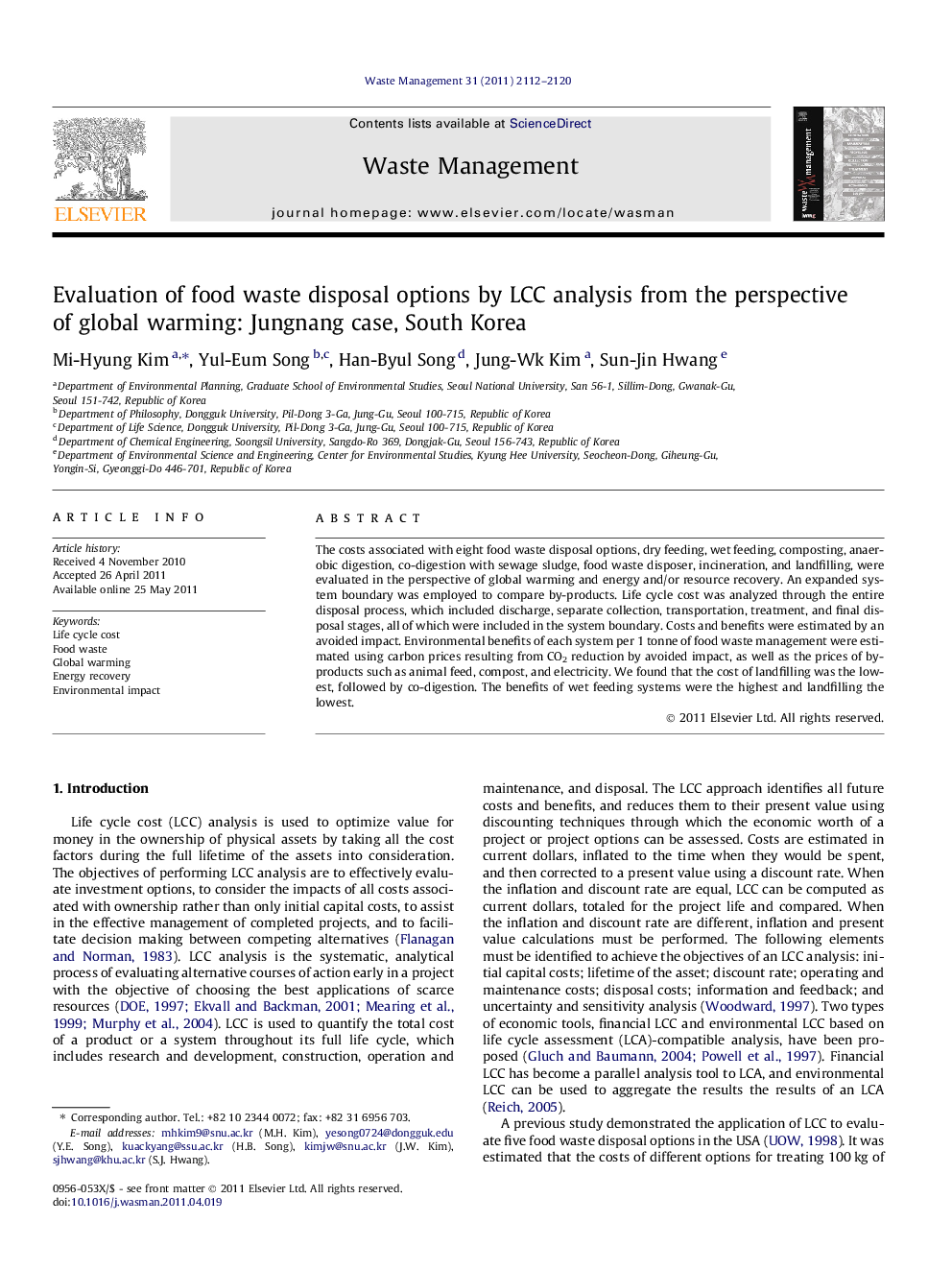| Article ID | Journal | Published Year | Pages | File Type |
|---|---|---|---|---|
| 4472386 | Waste Management | 2011 | 9 Pages |
The costs associated with eight food waste disposal options, dry feeding, wet feeding, composting, anaerobic digestion, co-digestion with sewage sludge, food waste disposer, incineration, and landfilling, were evaluated in the perspective of global warming and energy and/or resource recovery. An expanded system boundary was employed to compare by-products. Life cycle cost was analyzed through the entire disposal process, which included discharge, separate collection, transportation, treatment, and final disposal stages, all of which were included in the system boundary. Costs and benefits were estimated by an avoided impact. Environmental benefits of each system per 1 tonne of food waste management were estimated using carbon prices resulting from CO2 reduction by avoided impact, as well as the prices of by-products such as animal feed, compost, and electricity. We found that the cost of landfilling was the lowest, followed by co-digestion. The benefits of wet feeding systems were the highest and landfilling the lowest.
► Various food waste disposal options were evaluated from the perspective of global warming. ► Costs of the options were compared by the methodology of life cycle assessment and life cycle cost analysis. ► Carbon price and valuable by-products were used for analyzing environmental credits. ► The benefit–cost ratio of wet feeding scenario was the highest.
